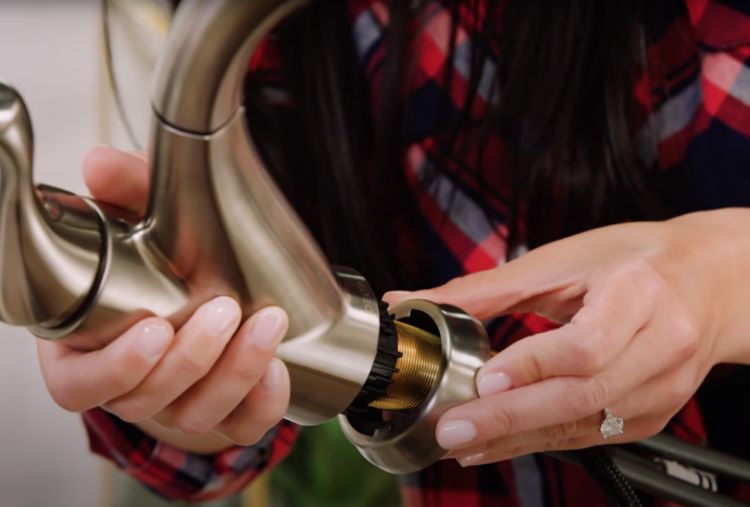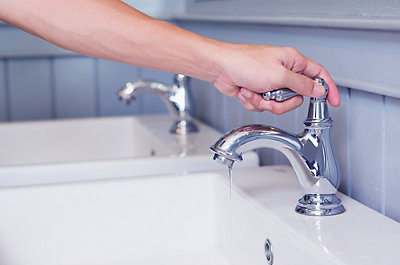The Causes Behind Dealing with a Malfunctioning Faucet
The Causes Behind Dealing with a Malfunctioning Faucet
Blog Article
Are you currently hunting for advise about Should I Repair or Replace a Leaky Faucet??

Trickling faucets might appear like a small inconvenience, but their influence exceeds just the aggravation of the sound. From drainage to incurring unnecessary monetary costs and health and wellness risks, overlooking a dripping faucet can lead to various consequences. In this article, we'll delve into why it's essential to address this common house concern without delay and properly.
Waste of Water
Environmental Impact
Trickling taps contribute significantly to water wastefulness. According to the Environmental Protection Agency (EPA), a single tap dripping at one drip per secondly can squander more than 3,000 gallons of water annually. This not only stress water resources however also impacts communities and wild animals depending on them.
Step-by-Step Guide to Taking Care Of a Dripping Tap
Tools Needed
Prior to attempting to take care of a trickling faucet, gather the needed devices, consisting of a flexible wrench, screwdrivers, substitute parts (such as washers or cartridges), and plumber's tape.
Typical Faucet Issues and Their Solutions
Determine the kind of tap and the details concern creating the drip. Usual troubles consist of worn-out washers, corroded valve seats, or defective O-rings. Refer to manufacturer instructions or on-line tutorials for detailed support on repair services.
Financial Expenses
Enhanced Water Bills
Past the environmental influence, leaking faucets can blow up water expenses substantially. The gathered waste in time converts into greater utility expenditures, which might have been prevented with timely repair services.
Potential Residential Or Commercial Property Damages
Moreover, extended leaking can cause damage to components and surfaces surrounding the tap. Water accumulation can create staining, corrosion, and even structural concerns if left unattended, resulting in added fixing costs.
Health Worries
Mold And Mildew and Mildew Growth
The consistent existence of dampness from a leaking tap develops an ideal environment for mold and mildew development. These fungis not just compromise indoor air quality however also present health and wellness risks, specifically for individuals with respiratory system conditions or allergic reactions.
Waterborne Diseases
Stagnant water in leaking faucets can become a breeding ground for microorganisms and various other microorganisms, increasing the risk of waterborne conditions. Contaminants such as Legionella germs thrive in stagnant water, possibly causing major illnesses when ingested or inhaled.
Do it yourself vs. Professional Repair
Advantages and disadvantages of DIY Repair
While some might attempt to fix a trickling tap themselves, do it yourself repairs feature their own collection of challenges. Without correct understanding and tools, do it yourself attempts can exacerbate the problem or lead to insufficient repair work, extending the problem.
Benefits of Hiring an Expert Plumber
Working with a professional plumber makes sure that the underlying reason for the dripping tap is addressed successfully. Plumbings possess the experience and devices to detect and fix faucet concerns effectively, conserving time and reducing the threat of more damage.
Environmental Duty
Individual Contribution to Preservation
Taking duty for repairing leaking faucets lines up with wider initiatives toward water conservation and ecological sustainability. Every individual's activities jointly make a substantial effect on protecting valuable resources.
Sustainable Living Practices
By focusing on prompt fixings and adopting water-saving habits, individuals contribute to sustainable living techniques that profit both existing and future generations.
Safety nets
Routine Upkeep Tips
To stop leaking faucets, perform regular upkeep such as cleaning aerators, checking for leakages, and changing damaged components promptly. Furthermore, take into consideration installing water-saving tools or updating to extra reliable components.
Relevance of Prompt Repairs
Addressing trickling taps as quickly as they're observed avoids further water wastage and prospective damage, ultimately conserving both water and money in the long run.
Influence On Residential Or Commercial Property Worth
Assumption of Well-Maintained Residential Or Commercial Property
Preserving a residential or commercial property in good condition, consisting of resolving maintenance issues like dripping faucets, boosts its perceived value and worth among prospective purchasers or lessees.
Influence on Resale Value
Properties with well-kept plumbing components, consisting of faucets, command greater resale worths in the realty market. Addressing leaking faucets can contribute to a positive perception throughout home assessments and negotiations.
Conclusion
Addressing a dripping tap surpasses plain convenience; it's a necessary action toward saving water, decreasing financial prices, and securing health and wellness and residential property. Whether through do it yourself repair services or professional aid, acting to fix leaking faucets is a little yet impactful means to promote liable stewardship of resources and contribute to a much healthier, much more lasting future.
Most Common Reasons for a Leaky Faucet and How to Stop the Drip
Whether it’s your kitchen faucet leaking or a bathroom faucet leaking, one leaky faucet can waste anywhere from three to 30 gallons of water every single day. If the constant drip-drip-drip doesn’t get your attention, your water bill will. The good news is that, by following a few simple steps, chances are pretty good you can fix the problem yourself.
Why is it dripping?
Before you start taking things apart, let’s break down some of the most common causes of a leaky faucet.
Bad O-ring.
A cartridge is a valve that controls the flow of water into the faucet spout. On cartridge faucets there’s an O-ring—the little disc attached to the stem screw that holds the faucet handle in place. If it’s loose or worn-out, it can cause your sink handle to leak. Of course, the cartridge itself could be worn out. If that’s the case, make sure you replace it with the exact same kind.
Corroded valve seat.
The valve seat connects the faucet and the spout. If the leak seems to be coming from the spout, it might be because a buildup of water sediment has corroded the valve seat.
Worn-out washers or seals.
A leaky spout could be caused by a bad washer that rests against the valve seat. It’s just a matter of time before friction takes its toll. It could also be the wrong size washer or one that’s been installed incorrectly. Water sediments can also corrode inlet and outlet seals.
Water pressure.
If the faucet only drips now and then, or when you turn the handles a certain way, you should probably check your home’s water pressure.
Loose or broken parts.
The adjusting ring and packing nuts in the stream screw can become loose over time, causing your sink handle to leak. Try tightening or replacing the packing nut. If the leak is coming from the pipes underneath the sink, you probably have a broken pipe or fitting. If that’s the case, you should definitely call a plumber.
Know your faucet.
Faucets come in a variety of types. Each one has its own assembly—and its own possible causes of leaks. Learning about the four most common kinds of faucets will help you know how to take them apart and make any repairs.
How to stop a leaky faucet
Fixing that leaky faucet doesn’t have to take a lot of time, money, or expertise. It’s usually a simple matter of replacing a worn-out washer or gasket, a loose O ring, or another part. Chances are really good you can do this yourself if you follow these simple steps.
Shut off the water.
Before you tackle the faucet, cut off the water supply to the sink. There should be one valve for hot and one for cold. Hand-turn them clockwise with your hands till they close. If there are no valves under the sink, head to the basement and shut off the main water supply to the house. Then turn on the faucet until it empties out the water that’s still in the line and you’re ready to start. It’s a good idea to cover the sink drain with a plug or a rag so you don’t lose any small pieces and parts while you’re working.

We had been introduced to that article about Should I Repair or Replace a Leaky Faucet? from a buddy on our other website. Sharing is caring. Helping others is fun. Many thanks for being here. Please visit our blog back soon.
Report this page